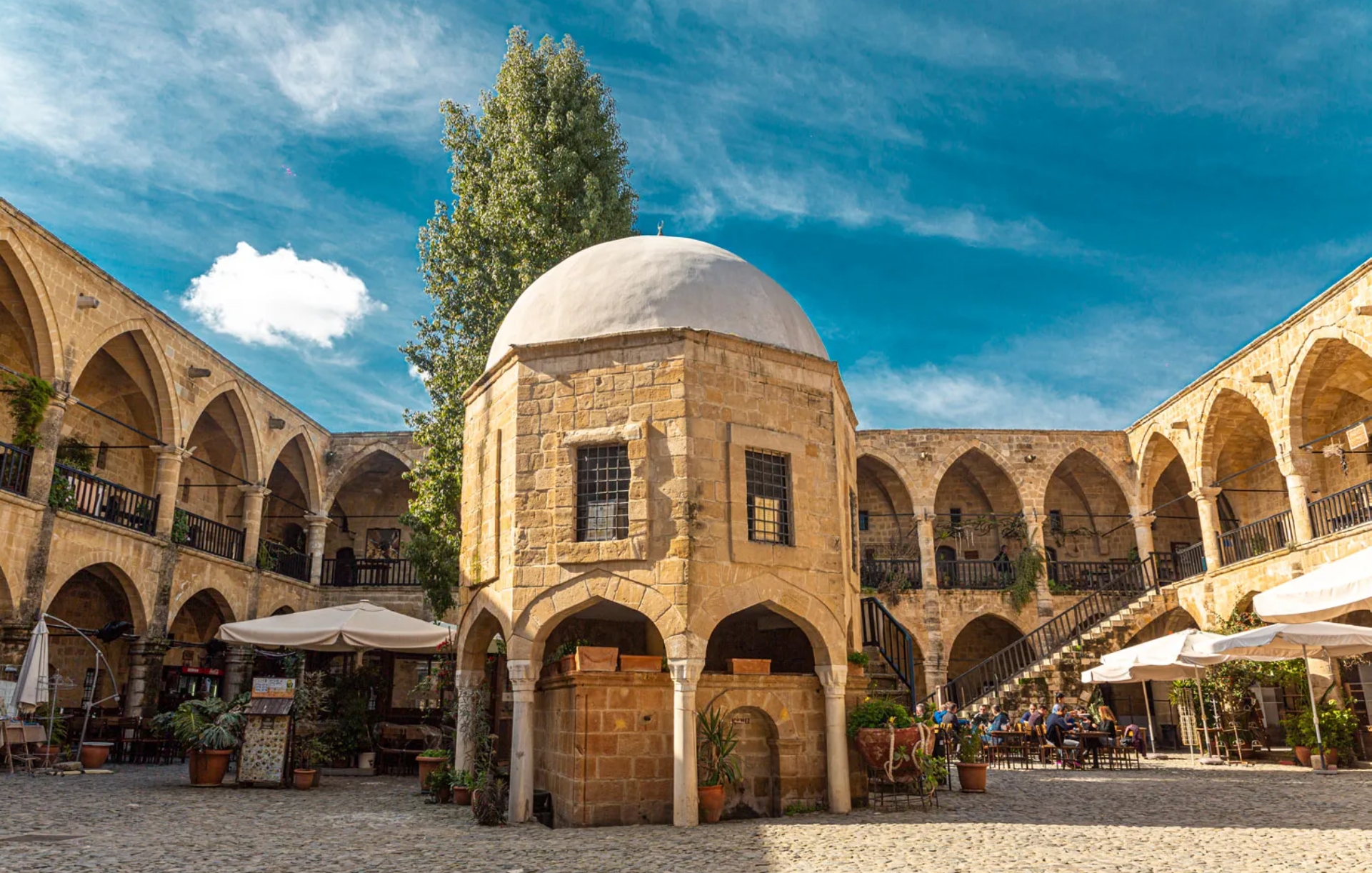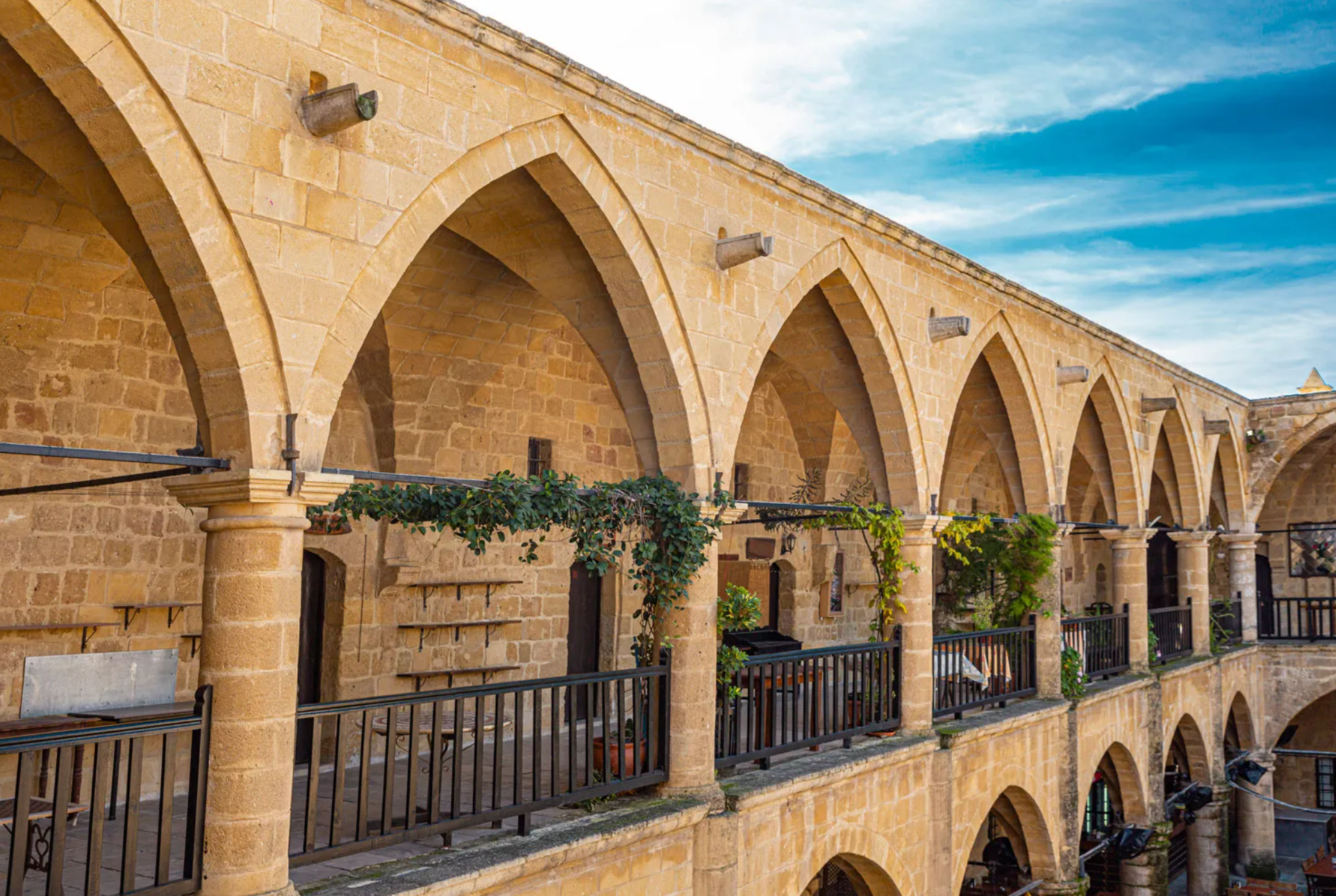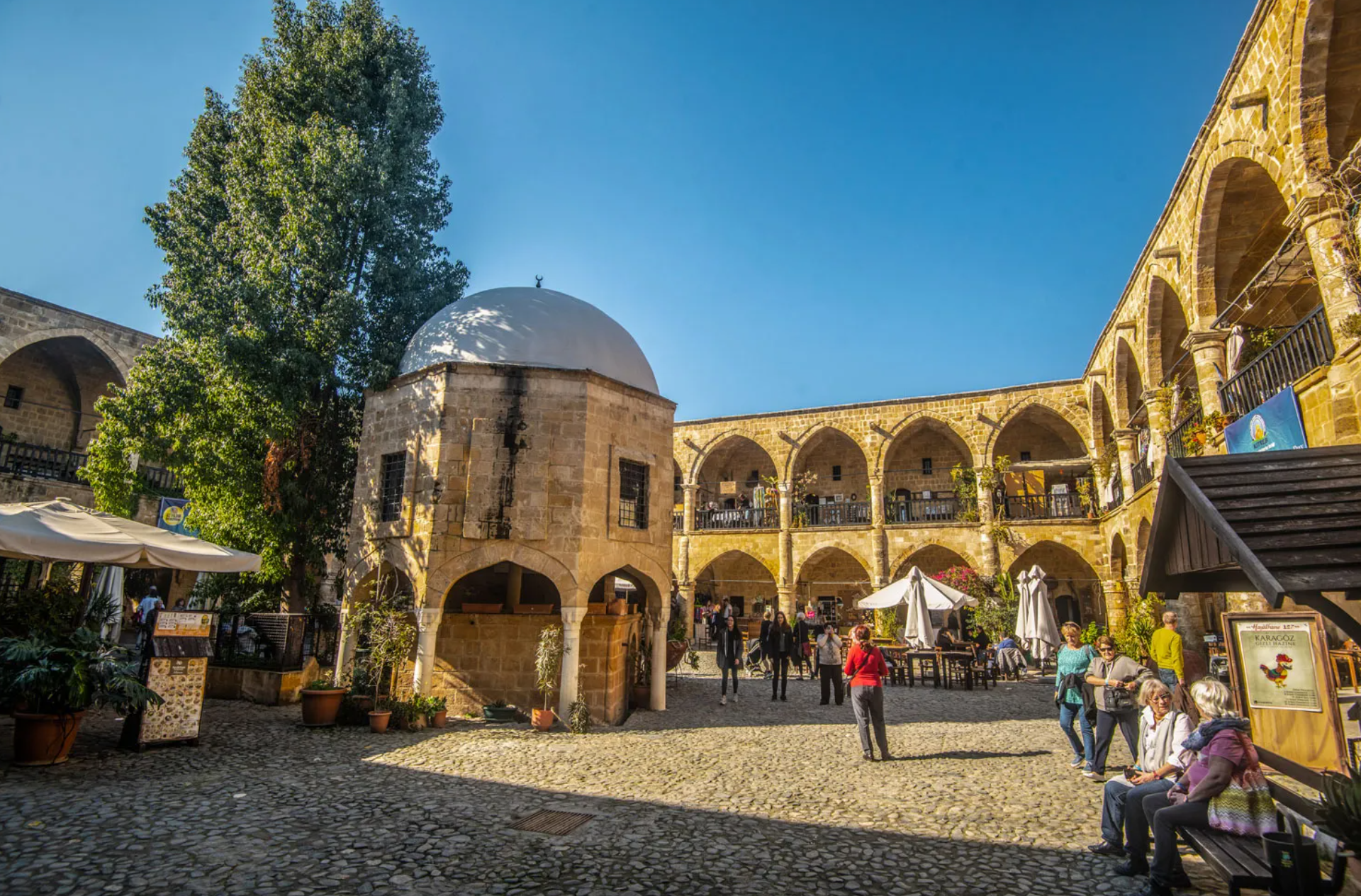


Great Inn, is one of the most important Ottoman structures on the whole island. Construction began in 1572 under the guidance of Mustafa Pasha who was the first Ottoman governor of Cyprus, and it was quickly established as the major trading point. These Inns or Caravanserais were used by merchants from the Orient, Arabia, Anatolia, and Europe to store and trade their goods. In the centre, there is a small mosque with an ablution facility beneath it and there are two entrances. The doorways are high enough and wide enough to allow a fully laden camel to enter.
Once inside the merchant would unload his camels and display his merchandise in the room on the lower floor, taking the upper room as his accommodation during his period of trade. The camels would have been stabled outside the Inn. At night the large entrance doors to the caravanserais would be closed and secured and the only access would be through a small doorway just large enough for a person to get through. This small door is called the “eye of the needle”, and reference is made to it in the Holy Bible.
The Buyuk Han has been fully restored and is now a busy and thriving outlet for local arts and crafts. There are painters and lace makers, wine producers, and small cafes. It is a wonderful place to relax and search for souvenirs, and when it is bustling with activity it is not difficult to imagine what it would have looked like when it was the great central trading post of Cyprus.
Externally, the Han resembles a fortress, and upon the British takeover in 1878, the inn was restored for use as the Central Prison of Nicosia. Between 1903 and 1947, the building was used as an inn, after which it became a refuge for poor families where they could rent rooms cheaply until 1962. After spending most of the 1990s being restored, the inn has been revived as a thriving arts centre, consisting of several galleries and workshops, and has once again become the hub of North Nicosia’s Old City bustle. Folklore dance shows, piano recitals, and drama displays are also common nowadays within the walls.
